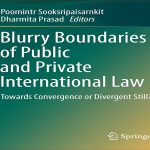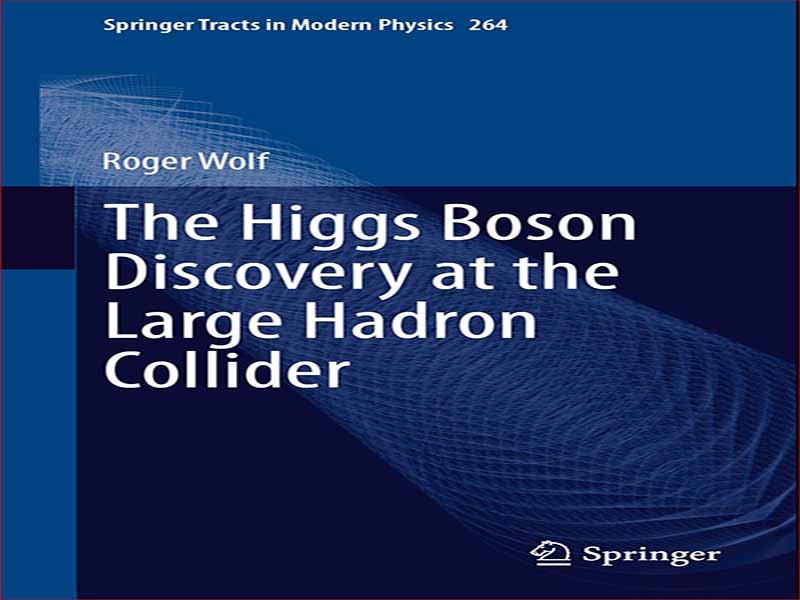- عنوان کتاب: The Higgs Boson Discovery at the Large Hadron Collider
- نویسنده: Roger Wolf
- حوزه: فیزیک مدرن
- سال انتشار: 2015
- تعداد صفحه: 192
- زبان اصلی: انگلیسی
- نوع فایل: pdf
- حجم فایل: 4.99 مگابایت
تئوری برای توصیف همه اجزای اساسی ماده و برهمکنشهای آنها، مدل استاندارد فیزیک ذرات (SM) است [1-3]. این یک نظریه میدان کوانتومی کوواریانت لورنتس است و به عنوان یک نظریه چند ذره ای، با عملگرهایی برای ایجاد و تخریب ذرات. این نه تنها قادر است دینامیک ذرات بنیادی را توضیح دهد، بلکه می تواند انتقال از یک ذره به ذره دیگر، تجزیه ذرات، نابودی ذرات یا تولید ذرات جدید از خلاء کوانتومی را نیز توضیح دهد، که با وضعیت پایه انرژی نظریه مطابقت دارد. در مکانیک کوانتومی ذرات به بوزون ها (با اسپین عدد صحیح) و فرمیون ها (با اسپین نیم عدد صحیح) طبقه بندی می شوند. در محیطهای چند ذرهای، هر دو گروه از ذرات رفتار متمایزی دارند: در حالی که بوزونها فضای فازی یکسانی دارند، که امکان توصیف دینامیک آنها را در یک تابع موج متقارن فضا فراهم میکند، فرمیونها همیشه یک عنصر منحصربهفرد را در یک چند ذره اشغال میکنند. فاز فضایی، که هرگز نمیتوان آن را همزمان با هیچ فرمیون دیگری به اشتراک گذاشت. این واقعیت را اصل طرد ولفگانگ پاولی [4] بیان می کند. فرمیون ها، بر خلاف بوزون ها، با توابع موجی توصیف می شوند که در مختصات فضایی خود ضد متقارن هستند. رفتار سیستمهای چند ذرهای ساختهشده از فرمیونها یا بوزونها از آمار فرمی یا بوز-انیشتین پیروی میکند، که برای همه ذرات بنیادی و غیرقابل تقسیمی که تاکنون میشناسیم، و همچنین برای اجسام مرکب پیچیدهتر که هنوز باید انجام شوند، صادق است. بر اساس مکانیک کوانتومی مانند اتم ها یا مولکول ها درمان می شود. امروزه، آزمایشهای فیزیک ذرات توانایی تجزیه و تحلیل ساختارها در فواصل کوچک 10-19 سانتیمتری را دارند که مربوط به یک زیردر آسیاب به اندازه پروتون است. طبق درک ما، تمام موادی که می دانیم از کوارک ها و لپتون ها که هر دو فرمیون هستند، با اسپین 1/2 تشکیل شده اند. مشخص شده است که هر دو نوع ذرات فاقد ساختار بیشتری هستند (یعنی از ذرات بنیادی تری ساخته نشده اند)، تا سطح دقت فعلی غیرقابل تقسیم و نقطه مانند هستند. بر اساس دانش کنونی ما می توانیم چهار نیروی اساسی را برای کنترل همه برهمکنش های بین آنها که با تبادل ذرات بوزونی انجام می شود تعیین کنیم: گرانش، نیروی الکترومغناطیسی، نیروی ضعیف و قوی. هر یک از این نیروها در پاراگراف های بعدی به اختصار مورد بحث قرار خواهند گرفت.
The theory to describe all fundamental constituents ofmatter and their interactions is the StandardModel of Particle Physics (SM) [1–3]. It is a Lorentz covariant quantum field theory and as such a multi-particle theory, with operators for particle creation and destruction. It is capable not only of explaining the dynamics of elementary particles but also transitions from one particle into another, particle decays, particle annihilation or the production of new particles out of the quantum vacuum, which corresponds to the energy ground state of the theory. In quantum mechanics particles are categorized into bosons (with integer spin) and fermions (with half integer spin). In multi-particle environments both groups of particles have a distinct behavior:while bosons share the same phasespace, which allows for a description of their dynamics in a single, space-symmetric wave function, fermions always occupy a unique element in a multi-particle phasespace, which can never be shared with any other fermion at the same time. This fact is expressed by the exclusion principle of Wolfgang Pauli [4]. Fermions, in contrast to bosons, are described by wave functions which are anti-symmetric in their space coordinates. The behavior of multi-particle systems made of fermions or bosons follows the Fermi or Bose-Einstein statistics, which hold for all fundamental, non-divisible particles that we know so far, as well as for more complex composite objects that still need to be treated on a quantum mechanical basis, like atoms or molecules. Nowadays, the particle physics experiments have the ability to analyze structures at distances as small as 10−19 cm, corresponding to a sub-per mill of the size of the proton. To our understanding, all matter that we know is made up of quarks and leptons, which both are fermions, with spin 1/2. Both kinds of particles have been found to lack further structure (i.e. they are not made up of even more fundamental particles), to be non-divisible and point-like up to the current level of accuracy. To our current knowledge we can assign four fundamental forces to govern all interactions between them which are mediated by the exchange of bosonic particles: gravitation, the electromagnetic, weak and strong force. Each of these forces will be briefly discussed in the following paragraphs.
این کتاب را میتوانید از لینک زیر بصورت رایگان دانلود کنید:
Download: The Higgs Boson Discovery at the Large Hadron Collider


































نظرات کاربران